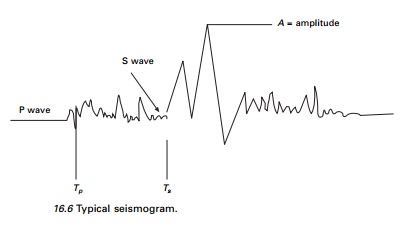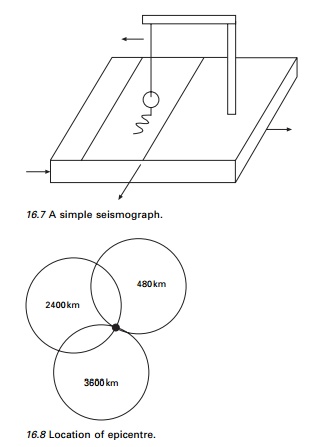Chapter: Civil : Structural dynamics of earthquake engineering
Earthquake Measuring instruments

Measuring
instruments
The first instrument to measure an earthquake was
invented in AD 132 by Zhang Heng, a Chinese philosopher. It was a 2 m in diameter
bronze jar with a central pendulum inside and decorated outside with a series
of dragon heads connected to a pendulum, each with a ball in a hinged mouth.
Directly below each dragon’s head on the surface of the stand was a bronze frog
head with its mouth open to receive the ball from the dragon’s mouth. During
the earthquake the ground motion would move the balls to fall from the dragon’s
mouth into the frog’s mouth. The direction of earthquake was indicated by

which of the dragon
heads dropped a ball. By the end of the nineteenth century several European
inventors had constructed different seismographs. Most used electromagnetics
operated by suspending magnetic mass or pendulum within an electric coil as
shown in Fig. 16.7.
A seismometer is an
instrument that senses the Earth’s motion and a seismograph combines a
seismometer with recording equipment to obtain permanent record of motions.
Scientists can compute how much energy is released during an earthquake.
Calculations are made in various seismographs near to and far from the
epicentre to determine the intensity of the earthquake.
From three different locations the place of
epicentre can be located exactly, as shown in Fig. 16.8. One such instrument is
required in each of the two orthogonal horizontal directions. Of course for
measuring vertical oscillations the string pendulum is replaced with a spring
pendulum oscillating about a

fulcrum. Some
instruments do not have a timer device (i.e., the drum holding the chart paper
does not rotate). Such instruments proved only the maximum extent of the motion
during the earthquake and for that reason they are called seismoscopes.
A number of smaller
size earthquakes take place before and after a big earthquake (main shock). Those
occurring before the big one are called fore shocks and the ones
after are called after shocks.
Related Topics